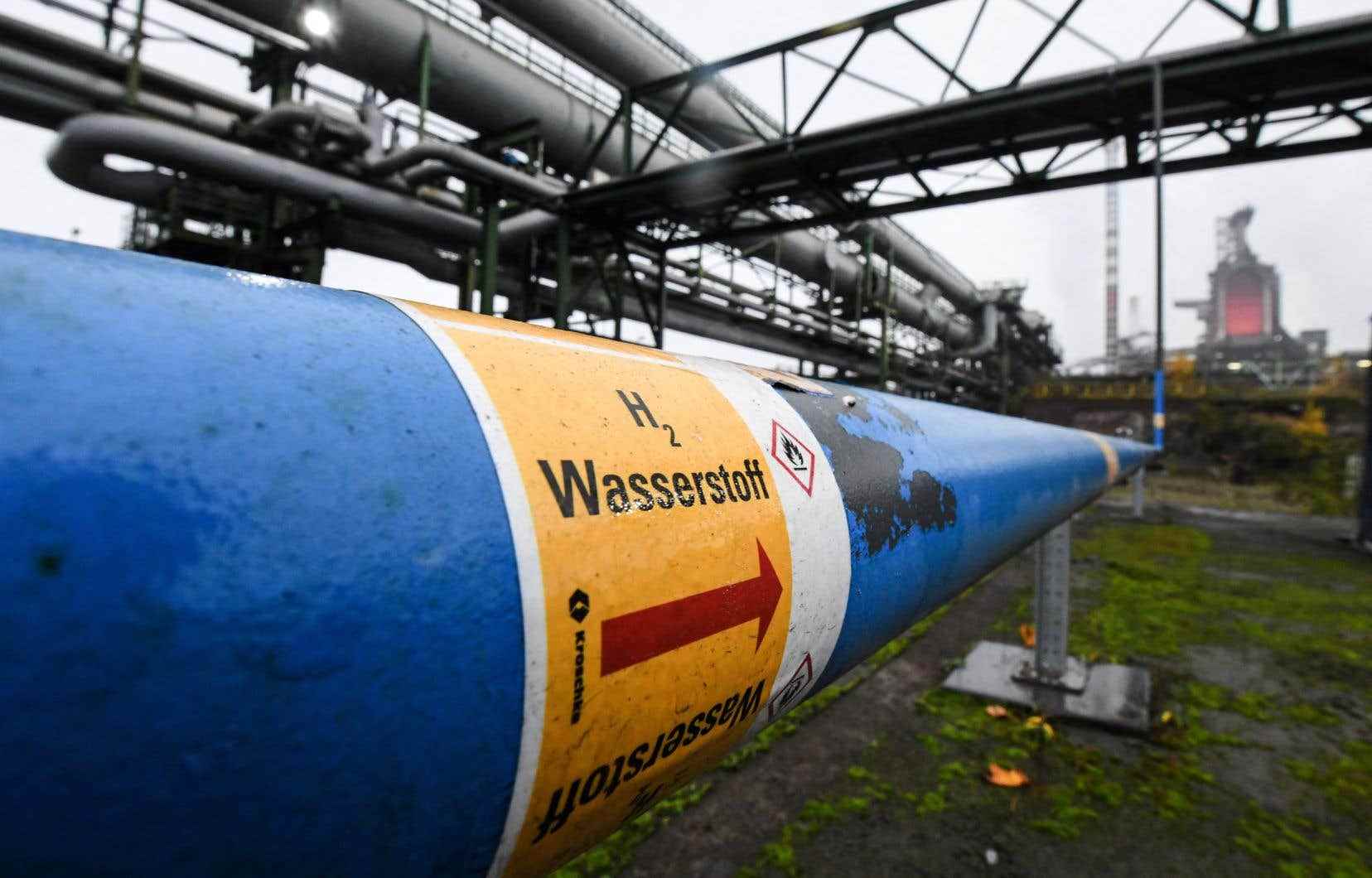The German Chancellor, Olaf Scholz, left Canada with the promise that his country would obtain deliveries of hydrogen as early as 2025. However, transporting this fuel over such a long distance involves energy losses which make this idea unviable, specialists believe. .
Germany is partly relying on clean hydrogen to decarbonize its economy and free itself from its dependence on Russian natural gas. Through its agreement with Canada, it hopes very soon to create a “transatlantic supply chain” for clean hydrogen. The resource could be generated with electricity from wind power.
Hydrogen, a light gas, must be transformed to facilitate its transport over long distances. It can be liquefied, like natural gas, or converted into ammonia (NH3). The ammonia, very dense in energy, can then be reconverted into hydrogen once it arrives at its destination.
According to the Canadian Minister of Natural Resources, Jonathan Wilkinson, about fifteen green hydrogen production projects are in development and could one day supply Germany. The majority of them rely on a conversion to ammonia for transport by ship.
The problem is that at each processing step, energy is consumed. First, the switch from electricity to hydrogen involves losses of 30 to 40%. Then, the conversion to ammonia leads to losses greater than 15%, and losses of the same order occur for the return to hydrogen.
Currently, ammonia — an essential ingredient for making chemical fertilizers — isn’t used to transport hydrogen, says chemical engineer Paul Martin, co-founder of the independent science group Hydrogen Science Coalition. “The reason is simple: if we did that, we would lose most of the energy,” he says.
Several scientists have denounced the exaggerated enthusiasm of politicians over hydrogen over the past year. According to forecasts by the Intergovernmental Panel on Climate Change (IPCC), hydrogen will only account for 2% of the global energy balance in 2050.
Today, nearly half of the world’s hydrogen production — almost exclusively from fossil fuels — is used to make ammonia. Most of this ammonia is then used to make fertilizer.
This industry is a major greenhouse gas (GHG) emitter. Global production of ammonia results in emissions of 450 million tonnes of CO equivalent2 per year, i.e. five times Quebec’s GHGs. Canada generates millions of tonnes of ammonia from natural gas every year.
“It should be a priority to replace the gray or black hydrogen [issu du gaz naturel ou du charbon] by green hydrogen to make fertilizer, because we absolutely need fertilizer,” argues Johanne Whitmore, principal researcher at the Energy Sector Management Chair at HEC Montréal.
According to M.me Whitmore, the Canada-Germany hydrogen agreement was initialed primarily to send a political signal. There is a high probability that it will not materialize if more attractive options present themselves in Berlin by 2025.
According to Mr. Martin, Germany should use its Canadian green ammonia to make fertilizer, which would limit processing losses. “And again, I’m skeptical about the profitability of the business,” he says.
Harmful leaks
For now, it is unclear how Germany would use the imported ammonia. Would it be transformed back into hydrogen or used to make fertilizer? The joint statement of intent from Berlin and Ottawa makes no mention of this.
Transporting liquefied hydrogen is even more difficult than in the form of ammonia. To remain liquid, the molecule must be cooled to a very low temperature (-253°C). Each liter of liquid hydrogen contains half the energy of ammonia. Furthermore, liquid hydrogen tends to evaporate over the days, which generates losses.
In general, hydrogen leaks should be closely monitored, as they contribute to the greenhouse effect. Indeed, hydrogen interacts with other GHGs in the atmosphere and increases their warming potential. It prolongs the life of methane, in particular.
According to a UK government study published last spring, the global warming potential of hydrogen is about ten times higher per kilogram than that of CO2 over a period of 100 years. Over a period of 20 years, it is about thirty times more powerful.
“Hydrogen leakage during production, storage, distribution and use will partially negate some of the benefits of a hydrogen-based economy,” the study authors wrote. “Leakage minimization must be a priority if hydrogen becomes a major source of energy,” they added.
